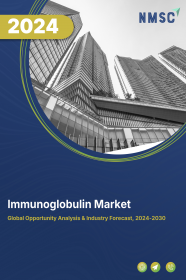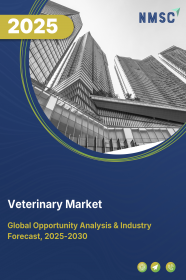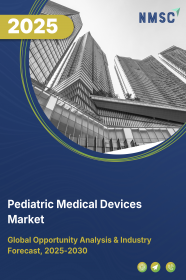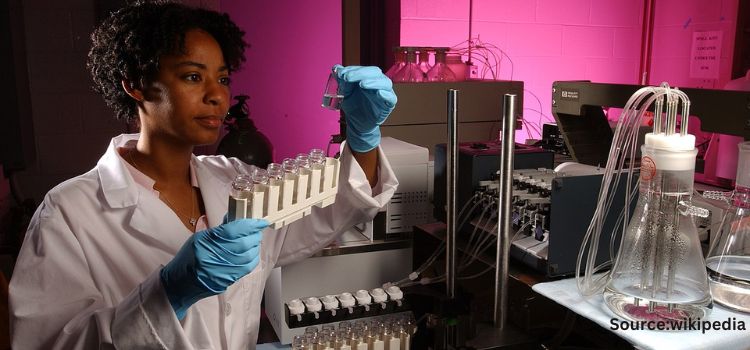
Immunoglobulin Market by Application (Hypogammaglobulinemia, Chronic Inflammatory Demyelinating Polyneuropathy, Immunodeficiency Disease, Myasthenia Gravis, Multifocal Motor Neuropathy, Idiopathic Thrombocytopenic Purpura, Inflammatory Myopathies, Specific Antibody Deficiency, Guillain-Barre Syndrome, and Others), Product Type (IGG, IGA, IGM, IGE, and IGD), and by Mode of Delivery (Intravenous and Subcutaneous): Global Opportunity Analysis and Industry Forecast, 2020-2030
Industry: Healthcare | Publish Date: 28-Nov-2024 | No of Pages: 679 | No. of Tables: 276 | No. of Figures: 246 | Format: PDF | Report Code : HC83
US Tariff Impact on Immunoglobulin Market
Trump Tariffs Are Reshaping Global Business
Market Definition:
The Global Immunoglobulin Market size was valued at USD 11.23 billion in 2019 and is predicted to reach USD 20.23 billion by 2030 with a CAGR of 5.4% from 2020-2030.
Immunoglobulins are glycoproteins produced by plasma cells and other lymphocytes. Immunoglobulin protects the body from diseases by acting as an antibody to support the immune system against disease causing agents such as virus, bacteria and others. These are obtained from blood through fractionation process and then purified for different therapeutic and non-therapeutic applications. Immunoglobulins are classified into different classes and isotopes, biological features, and target structures among others. These antibodies are administered to the body trough intravenous and subcutaneous modes of drug delivery.
Market Dynamics and Trends
Key factors fueling the growth of the immunoglobulin market during the forecast period are increase in geriatric population along with rise in the number of hemophilic patients. Additionally, advanced technology coupled with enhanced purification processes have paved the way for improved immunoglobulin production. Other factors such as prevalence of chronic inflammatory diseases in conjunction with increasing awareness and reduced side effects are anticipated to drive market growth during the forecast period.
However, stringent government regulations along with risk of side effects are factors expected to hamper the immunoglobulin market growth. On the other hand, innovation, research and development are anticipated to create numerous opportunities in the immunoglobulin market during the forecast period.
Market Segmentations and Scope of the Study:
The immunoglobulin market is segmented on the basis of product, application, mode of delivery and region. On the basis of product, the market is segmented into IGG, IGA, IGM, IGE and IGD. On the basis of application, the market is segmented into Hypogammaglobulinemia, Chronic Inflammatory Demyelinating Polyneuropathy (CIDP), Primary Immunodeficiency Disease, Myasthenia Gravis, Multifocal Motor Neuropathy, Idiopathic Thrombocytopenic Purpura (ITP), Inflammatory Myopathies, Specific Antibody Deficiency, Guillain Barre Syndrome, and Others. On the basis of mode of delivery, the market is segmented into intravenous and subcutaneous. Intravenous is sub segmented into 5% concentration, 10% concentration and others. Subcutaneous is sub segmented into 16.5% concentration, 20% concentration and others. Based on geography the market is segmented into North America, Europe, Asia Pacific and RoW.
Geographical Analysis
North America currently dominates the market and is anticipated to maintain its dominance throughout the forecast period. This is attributed to the factors such as presence of developed economies along with the rising prevalence of hemophilia. Also, other factors such as developed healthcare facilities, improved infrastructure and enhancement in technologies related to purification are anticipated to further propel the growth of the immunoglobulin market.
However, Asia Pacific is predicted to show rapid and consistent growth in market share within the forecast period owing to the increase in accessibility of healthcare facilities coupled with rising inflammatory diseases. Also, rising geriatric population in this region is expected to add revenue to the immunoglobulin market during the forecast period.
Competitive Landscape
Lucrative growth opportunities make the immunoglobulin market extremely competitive. Some of the major players in the market are CSL Ltd., Baxter international Inc., Octapharma AG, Grifols S.A, LFB SA, Kedrion Biopharma Inc., China Biologics Products, Inc., Biotest AG, Shire (Baxalta), and Bayer Healthcare among others. Strategic alliances, acquisitions and innovations along with R&D are key strategies used by market players to maintain market dominance.
For instance, in January 2019, Kedrion Biopharma announced that the U.S. Food and Drug Administration has accepted their Investigational New Drug (IND) application for a clinical study aimed at assessing efficacy and safety of a 10% intravenous immunoglobulin in the treatment of adult patients with primary immunodeficiency diseases (PID). This approval allows Kedrion to initiate clinical trial in the United States in coming months.
Key Benefits
-
The immunoglobulin report provides the quantitative analysis of the current market and estimations through 2020-2030 that assists in identifying the prevailing market opportunities to capitalize on
-
The study comprises a deep dive analysis of the immunoglobulin market trend including the current and future trends for depicting the prevalent investment pockets in the market
-
The information related to key drivers, restraints and opportunities and their impact on the immunoglobulin market is provided in the report.
-
The market share of the players in the global immunoglobulin market along with their competitive analysis.
-
Value chain analysis in the market study provides a clear picture of the stakeholders’ roles.
Key Market Segments:
By Product
-
IGG
-
IGA
-
IGM
-
IGE
-
IGD
By Application
-
Hypogammaglobulinemia
-
Chronic Inflammatory Demyelinating Polyneuropathy (CIDP)
-
Immunodeficiency Disease
-
Myasthenia Gravis
-
Multifocal Motor Neuropathy
-
Idiopathic Thrombocytopenic Purpura (ITP)
-
Inflammatory Myopathies
-
Specific Antibody Deficiency
-
Guillain Barré Syndrome
-
Others
By Mode of Delivery
-
Intravenous
-
5% Concentration
-
10% Concentration
-
Others
-
-
Subcutaneous
-
16.5% Concentration
-
20% Concentration
-
Others
-
By Geography
-
North America
-
U.S
-
Canada
-
Mexico
-
-
Europe
-
Germany
-
France
-
UK
-
Italy
-
Austria
-
Russia
-
Rest of Europe
-
-
Asia-Pacific
-
Japan
-
China
-
India
-
Australia
-
Rest of Asia-Pacific
-
-
RoW
-
Brazil
-
Saudi Arabia
-
Argentina
-
Remaining Countries
-
Key Players:
-
CSL Ltd.
-
Baxter international Inc.
-
Octapharma AG
-
Grifols S.A
-
LFB Group
-
Kedrion Biopharma Inc.
-
China Biologics Products, Inc.
-
Biotest AG
-
Shire PLC (Baxalta)
-
Bayer AG
REPORT SCOPE AND SEGMENTATION:
|
Parameters |
Details |
|
Analysis Period |
2019–2030 |
|
Base Year Considered |
2019 |
|
Forecast Period |
2020–2030 |
|
Market Size Estimation |
Billion (USD) |
|
Market Segmentation |
By Application (Hypogammaglobulinemia, Chronic Inflammatory Demyelinating Polyneuropathy, Immunodeficiency Disease, Myasthenia Gravis, Multifocal Motor Neuropathy, Idiopathic Thrombocytopenic Purpura, Inflammatory Myopathies, Specific Antibody Deficiency, Guillain-Barre Syndrome, and Others), Product Type (IGG, IGA, IGM, IGE, and IGD), and by Mode of Delivery (Intravenous and Subcutaneous) |
|
Geographical Segmentation |
North America (U.S., Canada, Mexico) Europe (UK, Germany, Italy, France, Austria, Russia, Rest of Europe), Asia-Pacific (China, Japan, India, Australia, Rest of APAC), Rest of the World (Brazil, Saudi Arabia, Argentina, Remaining Countries) |
|
Companies Profiled |
CSL Ltd., Baxter international Inc., Octapharma AG, Grifols S.A, LFB SA, Kedrion Biopharma Inc., China Biologics Products, Inc., Biotest AG, Shire (Baxalta), and Bayer Healthcare. |

















 Speak to Our Analyst
Speak to Our Analyst




















